Deep cleaning is a challenge for many, but it doesn’t have to be a daunting task. With planning, organization, and the right tips, you can transform your home into a clean and pleasant environment. In this article, we’ll walk you through the process of deep cleaning, giving you practical, safe, and environmentally friendly tips to make every corner of your home shine. Whether you’re a beginner or a seasoned cleaning veteran, this guide is packed with valuable advice to help you keep your home in tip-top shape.
The importance of deep cleaning
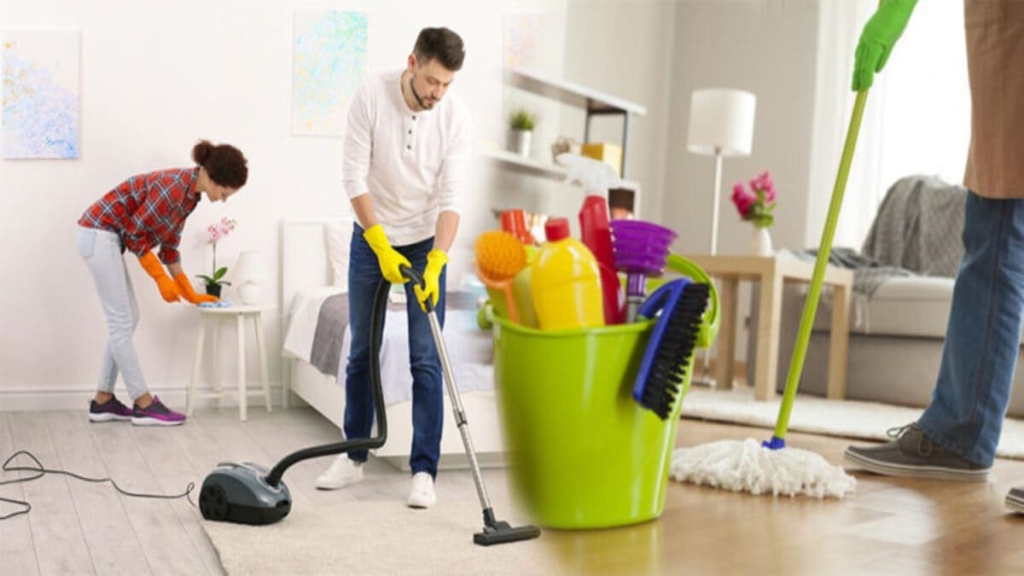
Even with daily cleaning, deep cleaning is essential to ensure a healthy environment free of germs, bacteria and accumulated dirt. In this process, you will be able to clean areas that are normally forgotten, such as behind furniture, corners, curtains, carpets and other hard-to-reach surfaces.
In addition, deep cleaning helps to preserve furniture and upholstery, increasing their durability. An added bonus: it is an excellent opportunity to get rid of items that are no longer useful or that can be donated.
Essential materials for heavy cleaning
An efficient deep cleaning requires the right products. Below, we list some essential items:
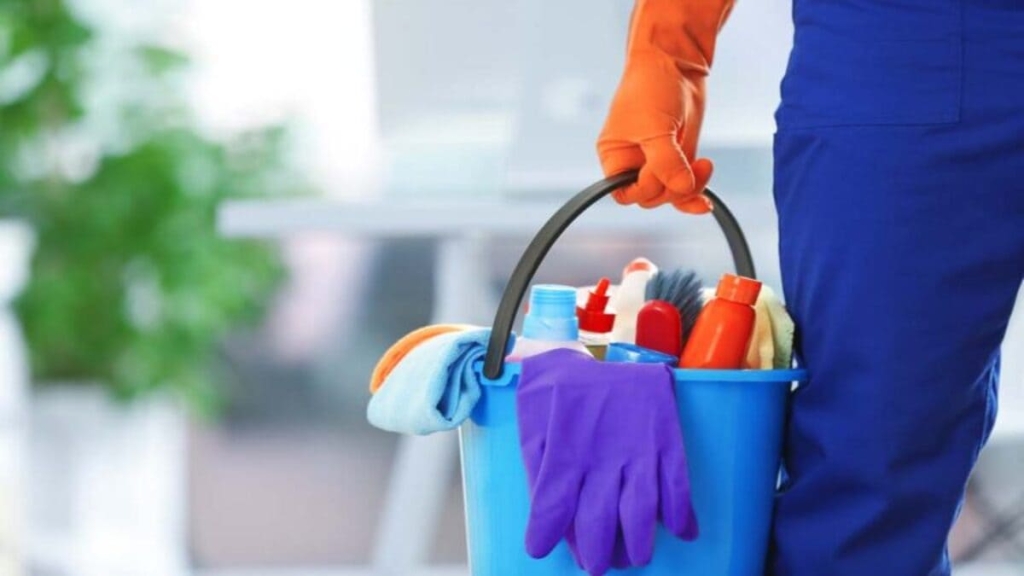
- Multipurpose cleaners: excellent for cleaning different surfaces;
- Degreasers: ideal for removing accumulated grease, especially in kitchens and bathrooms;
- Bleach or whiteners: great for disinfecting and removing stains;
- Baking soda and vinegar: to eliminate unpleasant odors, remove stains and clean delicate surfaces;
- Sponges and brushes: to scrub surfaces and remove heavier dirt;
- Microfiber cloths: for clean glass, mirrors and other sensitive surfaces;
- Rubber gloves: to protect hands when handling chemicals.
Don't forget a small stepladder and closed shoes to protect your feet and prevent slipping.
The art of starting a deep cleanse
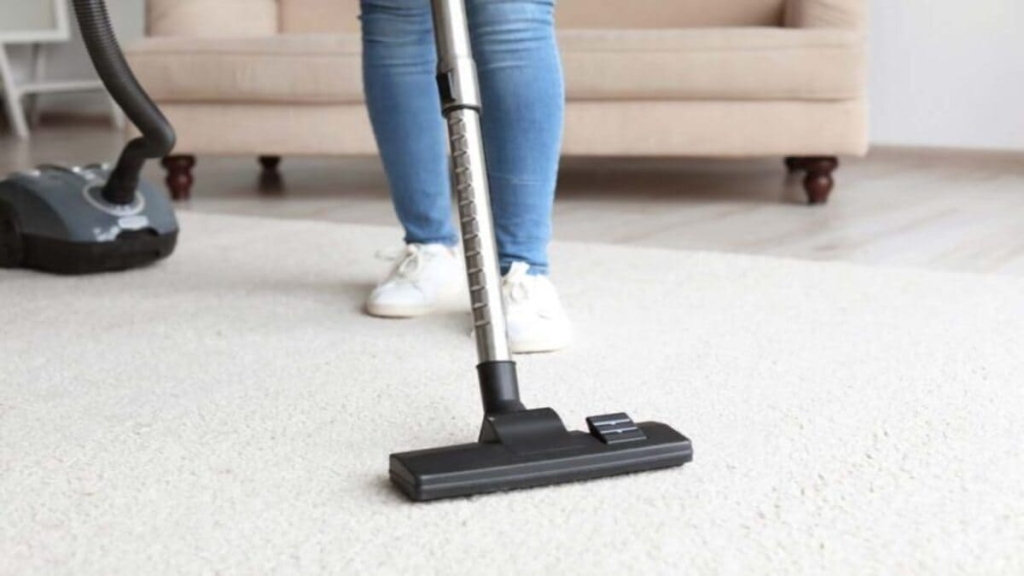
Há uma lógica para iniciar a faxina pesada, visando evitar que os cômodos já limpos se sujem novamente. A primeira dica é sempre começar pelo último cômodo, progressivamente em direção à entrada, geralmente a sala de estar. Outra estratégia eficaz é começar pelos ambientes mais difíceis e que acumulam mais sujeira, como a cozinha e o banheiro. Depois, passe para os quartos, sala de estar, escritório e áreas de convivência. And remember: When you finish cleaning a room, close the door and avoid entering it again until the entire house is clean.
Step-by-step guide to a deep clean: practical guidelines
We now understand the importance of deep cleaning and some basic techniques for its execution, but what is missing is a simple and uncomplicated manual. Get ready to get your hands dirty and reinvigorate your home by following the steps below:

Pre-Cleaning Planning
First of all, plan your cleaning. Determine which day will be the most appropriate, one in which you have enough time to dedicate yourself. Organize your cleaning tools and products and make a list of the tasks to be completed. Remember to prepare a space in the house to store objects that will be out of place during the cleaning.
Room cleaning order
Always start with the room furthest from the entrance, usually the bedrooms, to prevent dirt from spreading to other rooms that have already been cleaned. The kitchen and bathroom, as they are the places that accumulate the most dirt, should be the first rooms to be cleaned in this order.
Cleaning technique
For each room, always start from the top and work your way down. First, clean the ceiling, light fixtures, and fans. Then, clean the walls, furniture, and decorative items. Finally, clean the floor. In each room, pay attention to the details. The corners of the walls, baseboards, door and window frames are places where a lot of dust and dirt tend to accumulate.
Equipment and products needed for heavy cleaning
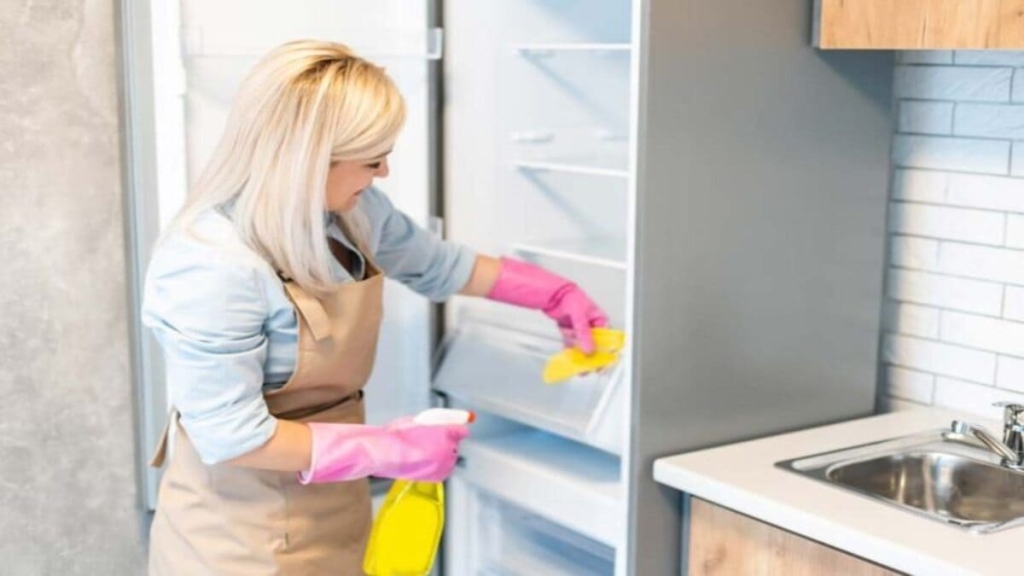
Equipment
The main equipment for heavy cleaning are:
- Vacuum cleaner: to remove dust and small debris from floors, furniture and curtains.
- Broom and mop: to clean the floor.
- Floor cloth, flannel and sponge: for cleaning various surfaces.
- Bucket: for mixing water and cleaning products.
- Ladder: to reach high points.
Cleaning products
Cleaning products are essential for heavy-duty cleaning. Each one has a specific purpose, so it’s important to understand how and where to use them:
- Detergent: Great for general cleaning of washable surfaces.
- Alcohol: used for cleaning objects and surfaces that need to be disinfected.
- Disinfectant: used for cleaning bathrooms and kitchens, mainly.
- Multipurpose cleaner: It has a wide application, being useful for cleaning different types of surfaces.
- Specific products: for cleaning glass, wood, stainless steel, among others. Always follow the instructions on the label for correct and safe use.
At the end of your deep cleaning, you will be able to enjoy a clean, pleasant and renewed environment. Always be open to adapting these tips to the reality of your home, remembering that each house has its own peculiarities.
Frequency of heavy cleaning
The frequency of deep cleaning can vary depending on the needs of your home. However, as a general rule, it is recommended to do a deep cleaning at least every six months. In between, you can maintain the cleanliness with lighter cleaning to prevent dirt from accumulating.
Safety tips for heavy cleaning
Cleaning your home doesn’t have to be a risky activity. Here are some tips to ensure your cleaning is safe and effective:
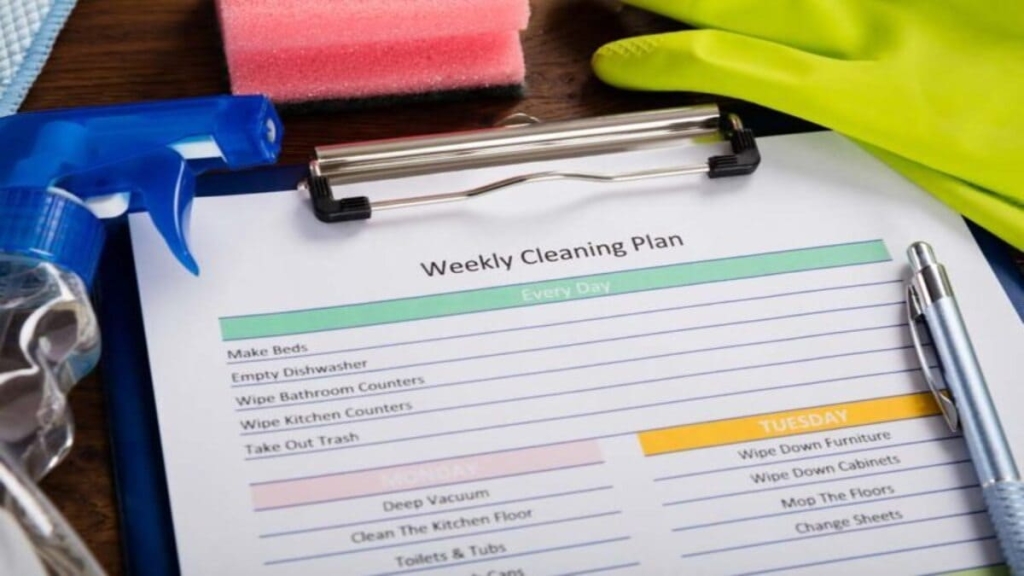
- Protect yourself: Wear gloves to protect your hands from chemicals, especially when cleaning the bathroom and kitchen. If you have dust allergies, consider wearing a mask.
- Avoid mixing chemicals: Some cleaning products can react with each other and produce toxic gases. For example, never mix bleach with ammonia.
- Make sure the room is well ventilated: When using cleaning products, it is important that the area is well ventilated to avoid inhaling chemicals.
- Beware of slippery surfaces: Be careful when cleaning wet floors to avoid slips and falls.
- Organize your workspace: Keeping your cleaning area organized will help prevent accidents. For example, don't leave buckets or rags where people could trip over them.
Be careful with the environment while cleaning
When doing a deep clean, it’s also important to consider the environmental impact of cleaning products. Many of these products contain chemicals that can be harmful to the environment. Look for eco-friendly alternatives whenever possible.
For example, white vinegar is a great all-purpose natural cleaner. It can be used to clean windows, remove mold stains, and even disinfect surfaces. Baking soda is also a great cleaning ally, being effective at eliminating odors, cleaning surfaces, and even unclogging drains.
We hope these tips make your next big cleaning easier. Remember, a clean home isn’t just about aesthetics, it’s also about health and well-being. So roll up your sleeves, plan ahead, and get to work!
Did you like this amazing tip? If so, share it with your friends and on your social networks. Leave your comment below and your suggestions. Receive it daily here on our website. Blog of ideas and tips free and follow us on Google News too. Thank you!